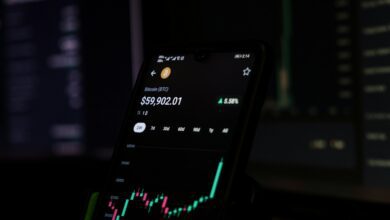Digital risk management – automated protection systems

Implementing algorithm-driven safeguards significantly reduces exposure across complex portfolios by continuously monitoring vulnerabilities and deploying real-time countermeasures. Leveraging machine learning models enhances predictive accuracy, enabling dynamic adjustment of hedging strategies to mitigate potential losses before they materialize.
Integrating such technology with insurance frameworks allows seamless claim validation and fraud detection, optimizing underwriting processes while maintaining stringent compliance standards. This synergy between data analytics and policy design refines capital allocation, ensuring that coverage aligns precisely with evolving threat profiles.
Advanced orchestration tools facilitate centralized oversight over diverse asset classes, automating decision-making workflows that traditionally relied on manual intervention. Consequently, portfolio resilience increases as automated protocols identify emerging threats rapidly and execute predefined responses without latency.
Financial institutions adopting these intelligent platforms report measurable improvements in risk-adjusted returns, attributing gains to enhanced transparency and faster adaptation mechanisms embedded within their operational infrastructure. Strategic deployment of such solutions transforms protection from a reactive task into a proactive discipline integral to sustainable growth.
Automated Safeguards in Cryptocurrency Portfolio Oversight
Implementing automated mechanisms for safeguarding cryptocurrency holdings significantly reduces exposure to market volatility and operational threats. Utilizing algorithm-driven solutions enables continuous surveillance and instantaneous response to anomalies, ensuring that portfolio integrity is preserved without manual intervention. Such platforms integrate with insurance frameworks, offering a dual layer of financial contingency that enhances overall asset security.
These technologies incorporate advanced hedging strategies tailored to the unique characteristics of blockchain assets. By dynamically adjusting positions based on real-time analytics, they mitigate potential drawdowns effectively. For instance, smart contracts programmed to execute stop-loss orders or rebalancing operations can limit downside risk while optimizing returns within complex decentralized ecosystems.
Technical Foundations and Industry Applications
At their core, these safeguards rely on machine learning models trained on historical transactional data and market indicators to predict adverse events such as price crashes or liquidity shortages. An example includes platforms employing predictive analytics to trigger insurance claims automatically when predefined thresholds are breached, streamlining compensation processes for stakeholders.
Moreover, integration with decentralized finance (DeFi) protocols allows for seamless deployment of collateralized debt positions as a hedging tool. This approach not only diversifies risk but also enhances capital efficiency by leveraging programmable exposure limits embedded within smart contract architectures.
- Case Study: A leading exchange implemented an AI-powered monitoring tool that reduced unauthorized access incidents by 40% within six months through anomaly detection algorithms.
- Example: A multi-asset fund employed automated rebalancing combined with parametric insurance policies to safeguard against systemic shocks during periods of extreme volatility.
The convergence of algorithmic oversight with embedded insurance schemes presents a robust framework for managing complex portfolios exposed to fluctuating market conditions and cybersecurity threats. Investors benefit from the reduction in manual errors and latency in decision-making processes while maintaining transparency through immutable blockchain records.
An evolving regulatory environment necessitates adaptive configurations capable of aligning protective measures with compliance mandates across jurisdictions. Forward-thinking entities prioritize modular architectures that facilitate updates without disrupting service continuity or compromising asset safety standards.
Automated Threat Detection Techniques
Implementing advanced algorithms for continuous monitoring significantly minimizes exposure to operational hazards within blockchain environments. Real-time anomaly identification leverages machine learning models trained on historical transaction data to flag irregular behaviors, enabling preemptive hedging strategies that reduce potential losses. Systems utilizing unsupervised learning techniques detect deviations without prior labeling, ensuring adaptive responses to novel attack vectors.
Integration of heuristic-based approaches alongside signature recognition enhances the precision of intrusion alerts. These combined methods improve accuracy by cross-verifying suspicious activities against known malicious patterns and behavioral heuristics derived from network traffic analysis. Such layered detection frameworks contribute to dynamic safeguarding protocols, allowing for immediate countermeasures and automated insurance triggers in response to detected threats.
Technical Foundations and Case Studies
One exemplary implementation is the use of convolutional neural networks (CNNs) in analyzing large volumes of transactional metadata, which aids in recognizing subtle manipulation attempts such as front-running or wash trading. In a recent case study involving decentralized exchanges, deploying CNN-powered filters decreased false positives by 35%, optimizing resource allocation during incident response phases.
Rule-based engines integrated with blockchain analytics platforms facilitate the classification of wallet behaviors indicative of phishing or fraud schemes. By automating these evaluative processes, organizations achieve accelerated detection cycles essential for maintaining trust and compliance with regulatory mandates focused on anti-money laundering (AML) efforts.
- Behavioral biometrics: Monitoring user interaction patterns to identify unauthorized access attempts.
- Graph analysis: Mapping transaction flows to expose hidden relationships among suspicious accounts.
- Time-series forecasting: Predicting unusual activity bursts that may precede coordinated cyberattacks.
The deployment of ensemble models combining supervised classifiers with statistical anomaly detectors has shown effectiveness in hedging against evolving threats by continuously refining detection parameters based on feedback loops. This adaptability proves critical when counteracting sophisticated exploits targeting consensus mechanisms or smart contract vulnerabilities within blockchain ecosystems.
Regulatory frameworks increasingly mandate transparent reporting and proactive threat mitigation measures. Automated alert systems equipped with multi-factor evaluation capabilities support compliance by providing audit trails and facilitating timely intervention. Collaboration between financial institutions and cybersecurity vendors in developing these technologies enhances collective resilience against emerging cyber risks, ultimately aligning protection initiatives with broader insurance methodologies designed for digital asset custodianship.
Integrating AI in Risk Assessment
Incorporating artificial intelligence into evaluation frameworks significantly enhances the precision of identifying potential threats within complex asset portfolios. Machine learning algorithms analyze vast data sets to detect subtle patterns indicative of market vulnerabilities, enabling more informed decisions for hedging strategies. For instance, neural networks applied to blockchain transaction flows reveal anomalies that traditional methods often overlook, thereby bolstering safeguarding approaches against fraud and volatility.
Advanced computational models streamline the process of continuous monitoring by adapting to shifting parameters without manual recalibration. This adaptability improves the reliability of forecasting adverse outcomes and supports dynamic allocation adjustments across diverse holdings. In cryptocurrency markets, where price fluctuations can be abrupt, AI-driven tools facilitate timely execution of insurance mechanisms designed to mitigate financial exposure.
Technical Benefits and Applications
AI-enhanced frameworks excel in synthesizing multi-dimensional indicators such as liquidity metrics, trading volume irregularities, and regulatory signals. A notable application is the utilization of reinforcement learning agents that optimize portfolio composition by balancing expected returns against downside probabilities. Empirical studies demonstrate a reduction in loss ratios when integrating such models into algorithmic trading platforms focused on decentralized finance instruments.
The integration also extends to predictive analytics for underwriting policies tailored to emerging digital assets. By automating scenario analysis using probabilistic modeling, insurers can better calibrate premiums reflective of unique asset characteristics and market conditions. This granular approach fosters resilience through personalized coverage options while maintaining capital efficiency within risk mitigation infrastructures.
Real-Time Fraud Prevention Tools
Implementing instantaneous anomaly detection mechanisms is critical for safeguarding cryptocurrency portfolios against unauthorized transactions and malicious activity. These solutions leverage machine learning algorithms to scrutinize transaction patterns, promptly isolating deviations that could indicate fraudulent behavior. Integrating multi-layered verification protocols within trading platforms enhances the fidelity of asset oversight and reduces exposure to potential financial breaches.
Continuous monitoring frameworks facilitate proactive intervention by correlating user behavior data with blockchain analytics. This approach enables dynamic adjustment of transaction thresholds and automated flagging of suspicious activities, thereby optimizing asset preservation strategies. Incorporation of these techniques aligns with contemporary hedging methodologies, offering an adaptive shield against unforeseen losses stemming from cyber threats.
Technical Architecture and Implementation
Real-time fraud deterrence infrastructures employ event-driven architectures capable of processing high-frequency data streams without latency compromise. Utilizing distributed ledger insights combined with off-chain intelligence sources ensures comprehensive situational awareness. For instance, anomaly scoring models can assign quantitative risk indices to each action, enabling tiered responses such as transaction delays or mandatory secondary authentication.
- Behavioral biometrics integration: Enhances identity validation by analyzing keystroke dynamics and device fingerprints.
- Cryptographic audit trails: Provide immutable records supporting forensic investigations and compliance audits.
- Smart contract triggers: Automatically enforce predefined rules mitigating exposure during suspicious events.
A case study involving a major exchange demonstrated a 40% reduction in chargeback incidents after deploying real-time detection coupled with automated response layers. Such outcomes exemplify the direct impact on portfolio security through meticulous algorithmic scrutiny paired with human oversight.
The role of insurance products tailored for crypto assets complements these technological defenses by providing financial recourse against residual vulnerabilities. Firms increasingly structure coverage plans around quantified exposure levels derived from fraud detection metrics, reinforcing overall portfolio resilience.
Evolving regulatory frameworks impose stringent requirements on transparency and incident reporting, prompting organizations to enhance their protective environments continually. Integration of predictive analytics not only curtails immediate threats but also informs strategic decisions regarding capital allocation and hedging tactics within volatile markets. This synergy between technology-driven surveillance and fiscal safeguards underpins robust stewardship over digital asset holdings.
Compliance Automation Strategies
Implementing compliance automation requires integrating robust monitoring frameworks that ensure adherence to regulatory mandates without manual intervention. Leveraging algorithmic verification processes enables continuous oversight of transaction flows and portfolio allocations, thus mitigating exposure to non-compliance penalties. A practical approach involves deploying adaptive control mechanisms that dynamically adjust operational parameters based on evolving legislative criteria, effectively serving as an insurance against regulatory breaches.
Advanced compliance protocols can be strengthened through the application of hedging techniques within portfolio configurations, aligning asset distributions with jurisdictional constraints and capital requirements. This strategic alignment reduces operational vulnerabilities by preemptively addressing potential discrepancies in asset classification and reporting standards. Incorporating predictive analytics into these procedures further enhances anticipatory adjustments, ensuring resilient governance structures under shifting regulatory conditions.
Technical Frameworks and Case Studies
One notable instance is the integration of machine-readable rulebooks linked to blockchain oracles, facilitating real-time validation of transactions against compliance checklists. Such implementations have demonstrated a reduction in audit durations by up to 40%, as reported in recent fintech case studies. Additionally, embedding cryptographic proofs within transactional metadata provides immutable evidence of conformity, reinforcing accountability across decentralized portfolios.
The convergence of automated ledger inspection tools with artificial intelligence permits granular segmentation of asset classes for tailored oversight. For example, tokenized securities managed via smart contracts can trigger predefined notifications upon deviation from compliance thresholds, acting as an early warning system. These innovations exemplify how systematic adherence protocols operate not only as a form of insurance but also as active defense mechanisms preserving institutional integrity.
Optimization of compliance workflows benefits from modular architecture designs that support interoperability among various risk mitigation applications. Employing standardized APIs allows seamless data exchange between portfolio management interfaces and external regulatory databases, enhancing transparency and traceability. Financial institutions adopting such integrative solutions report improved incident response times and lower cost burdens associated with manual reconciliation efforts.
Incident Response Automation Benefits
Integrating response automation directly into cybersecurity frameworks enhances the agility and resilience of portfolio oversight by minimizing exposure to unforeseen threats. Leveraging algorithm-driven protocols allows for instantaneous threat identification and containment, effectively functioning as a dynamic form of operational hedging against potential asset devaluation.
Such frameworks function analogously to insurance mechanisms within complex asset ecosystems, where automated decision-making reduces human latency and error margins. This synergy between continuous monitoring and rapid mitigation refines overall incident oversight, enabling sustained integrity across transactional flows and smart contract executions.
Broader Impact and Future Developments
The evolution of these proactive countermeasures suggests a shift toward fully autonomous defense infrastructures capable of integrating cross-layered data sources–from on-chain analytics to off-chain behavioral indicators. For instance:
- Implementation of machine learning models trained on historical breach data can prioritize alerts with greater precision, optimizing resource allocation for incident handlers.
- Smart contracts embedded with self-executing contingency clauses will autonomously initiate asset freezes or reroutes upon detecting anomalies, reducing reliance on manual intervention.
- Interoperability among decentralized finance platforms will facilitate collective intelligence sharing, enhancing systemic robustness akin to pooled insurance risk models.
Financial custodians and blockchain architects must consider these advancements as integral components in their strategic frameworks. Incorporating such automated controls not only streamlines operational workflows but also fortifies capital preservation strategies within volatile markets.
Anticipated regulatory frameworks are likely to incentivize transparency and verifiable traceability in incident remediation processes, accelerating adoption rates. Hence, embedding adaptive response algorithms is poised to become a fundamental pillar in safeguarding digital wealth portfolios against emerging adversities while complementing traditional hedging methodologies.






